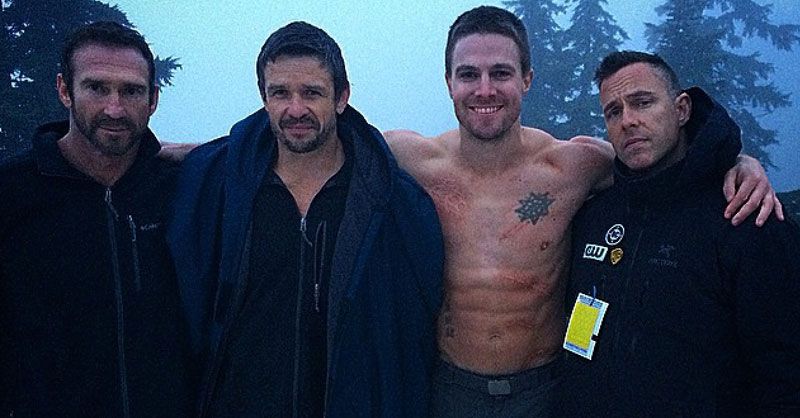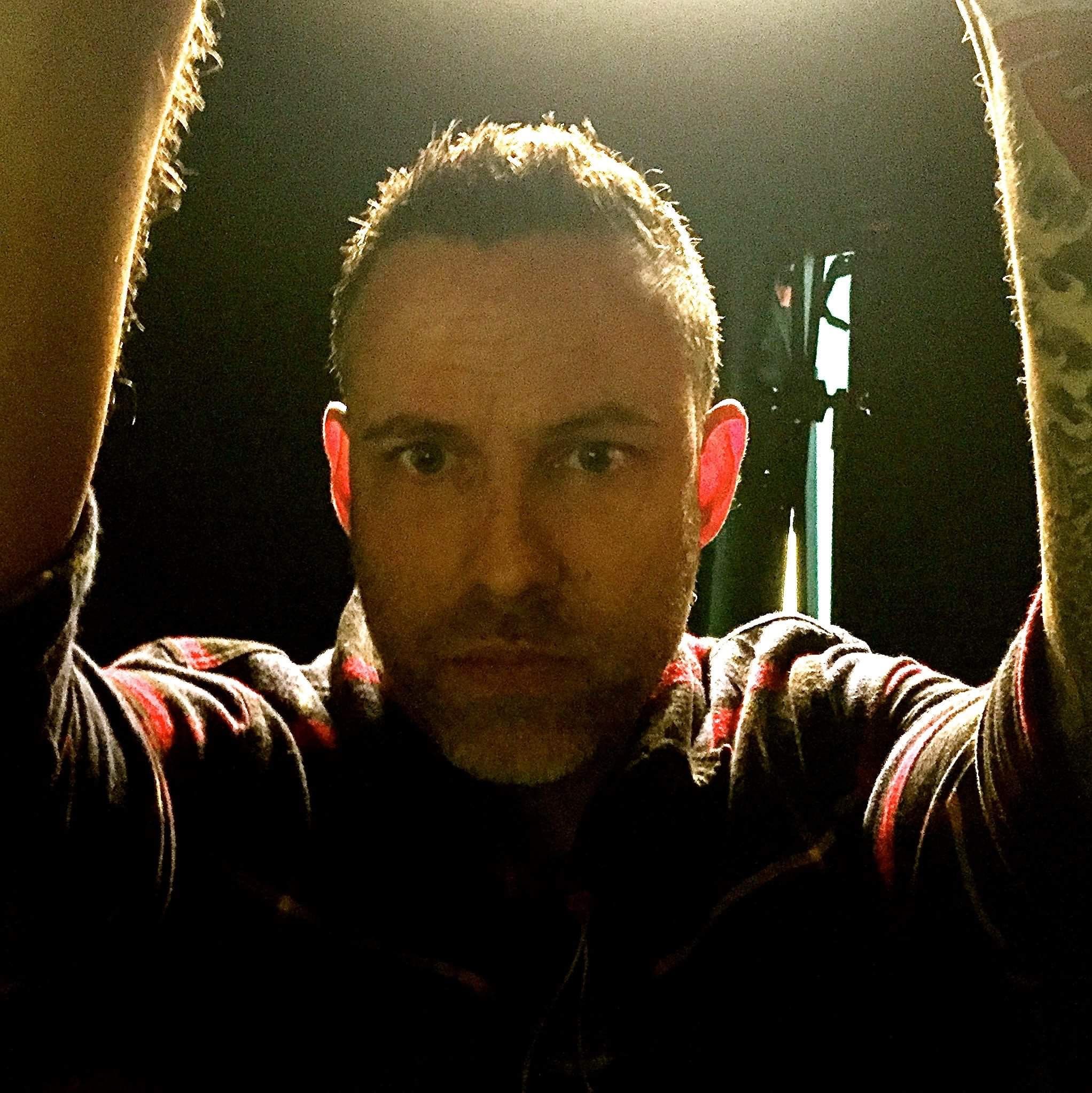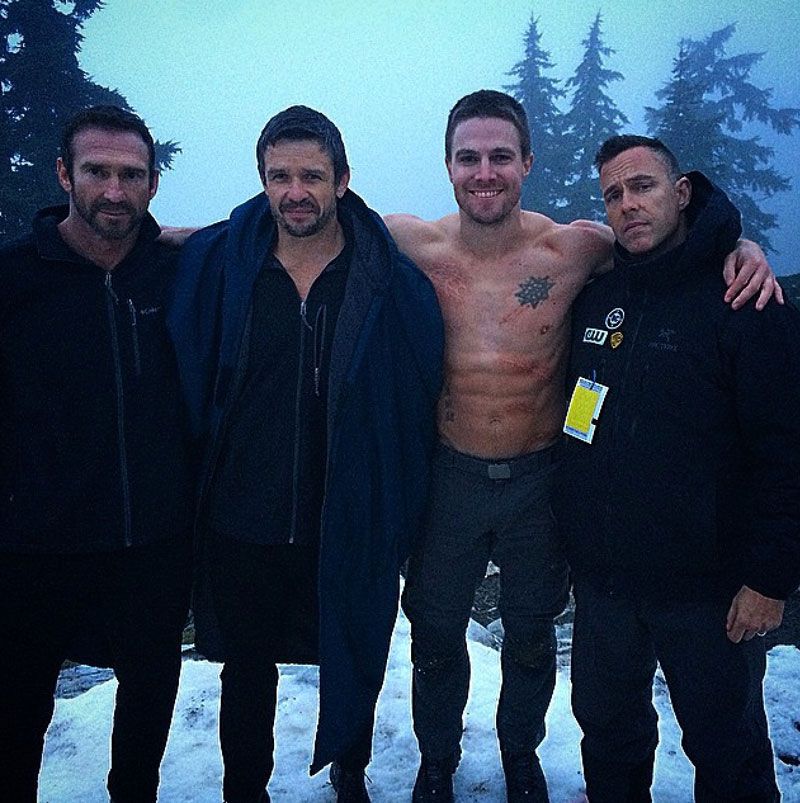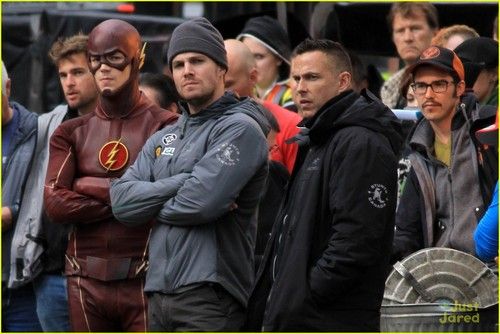When it comes to crafting Stephen Amell's fight scenes on "Arrow," fight coordinator James Bamford doesn't pull any punches.
Nor would audiences want him to. For the past four seasons, Bamford has worked on turning Amell into a lean, mean fighting machine. And though fans of The CW superhero drama tune in week after week due in no small part to the show's fight scenes, he'll be the first to tell you, his work isn't done yet.
RELATED: "Arrow's" Ramsey Calls Diggle "A Fractured Man Making Hard Choices"
"There's the old saying, "Go big or go home," Bamford tells CBR of this Season 4 finale's big fight scene. "This sequence buries every other one we've done."
CBR News: Your resume consists of over a hundred movie and television credits. How did you become involved with "Arrow?"
James Bamford: I was off working on a movie in Havana, Cuba called "Ek the Tiger," an action film mostly subsidized out of India and Dubai. They sought me out because they wanted a different style of action. They wanted it to be more international and have a Hollywood feel. I got snagged by them, and who doesn't want to go to Cuba for work? I got a phone call while I was working on that film from a stunt coordinator here in Vancouver named J.J. Makaro. J.J. has worked on pretty much every David Nutter-directed pilot shot in Vancouver, including "Smallville." Nutter brought on J.J. as a stunt coordinator. Once J.J. found out what the subject matter was, he called me and started asking me questions like, "What would I do to train this person if he was essentially Olympic-level in different athletics such as parkour." I said, "Well, if you want him to be a world-class martial artist, you need him to train this way." We started discussing the show -- I had no idea what it was. He said, "Where are you?" I said, "Cuba. I'll call you when I get home."
J.J. hadn't planned on having a fight choreographer. After we spoke, as he got deeper into the script, he realized there was a lot more to this show than he originally planned. He thought once the show started, he would get a different fight choreographer every episode, not realizing there needed to be some continuity in the style with the star. We started discussing this more when I returned from Cuba, and eventually he said, "Well, do you want to work on the show?"
He brought me in as a stunt performer to begin with; I'm one of the first guys that Stephen kills. He breaks my neck, back when he used to kill people randomly, which was a lot of fun. On Twitter, I used to post "This week's body count on 'Arrow' is..."
I was a performer, and started training Stephen on the pilot. Instead of having a specific fight coordinator position, I was brought on as a performer and given the honor of choreographing all the fight sequences for the pilot. It became apparent that I should be around, so I started training Stephen in martial arts, boxing, different movement types and weapons.
"Arrow's" leading man was no badass in the beginning. When did you realize Stephen was a beast with the choreography?
Stephen had never thrown a punch -- he told me that right off the bat. We worked the basics before I taught him any choreography. As I was teaching him on the side, I was busy choreographing the fights he would be performing. As I saw him progress in different basics and skills, I would add or subtract different movements that suited him within the choreography. When you are shooting a pilot, you really want the audience to get hooked. You want them to feel like he's doing it all. You can use someone's adaptiveness and quick-learning skills, but eventually you have to start teaching something new or use that stunt double from time-to-time.
Often TV scripts don't break down all the fight beats. It's up to the fight choreographer and stunt coordinator to flesh that out. What makes a thrilling fight sequence?
A story. A story has to be told within the action. The main challenges are obviously time and money for a series like this, where we shoot an eight-day schedule. We cram so much into that incredibly short time period, whereas, you'll get a show like "Daredevil" which will get 12 days of shooting, plus four second-unit days. That's a lot of time compared to what we get.
We're very proud of what we accomplish in a short amount of time. We also don't utilize a lot of old tricks. We haven't utilized slow motion, we don't shoot off-speed. We shoot regular speed. All our fights and action are played out in real time. We've been able to successfully tell the stories within the action without using a lot of tricks of the trade.
Viewers are expecting a death match between Oliver and Damien Darhk. How epic do things get?
Without giving anything away, there's the old saying, "Go big or go home." This finale sequence buries every other one we've done.
Damien Darhk wields tremendous magic. In what ways is he more challenging to choreograph for than some of Arrow's more physical threats?
It's been quite different. One of the common things we've shown in other characters in the show is where they trained. Damien Darhk trained with the League of Assassins as well. He's got those skills combat-wise. He does depend on his magical abilities far more. Why throw a punch if you don't have to? If I could wave my hand and throw someone across the room into a wall, I probably would. It's far less tiring, you don't break a sweat, and you don't get bloody knuckles from their teeth.
What I've noticed with Damien's character is, he's cocky. He's witty, charming and funny, but he's cocky. He knows how powerful he is, and he likes to make fun of his opponents. He likes to play with them a bit. In the Vixen episode, he lost his powers for a moment there; I don't think he was prepared for that. He was so taken off-guard that, for a moment, he may have forgotten how to fight without the powers. I don't think he'll let that happen again. He's learned from that experience.
The episode "Brotherhood" featured your directorial debut. What did you learn from that experience that made you a better choreographer?
It felt like I had been directing for years. I learned "Arrow" was the right vehicle for me to direct. I directed two episodes. As a choreographer, it's very difficult. As the director, I asked for very specific choreography from my partners. I shot it a specific way. I shot it in a very specific style that I've always wanted to shoot off the choreography. What's difficult is, when you're the fight choreographer, you only suggest or recommend how to shoot the action. I can't order a director how to put it together. Some directors embrace the plan, some of them have their own plan. Some of them have a better plan. For instance, Glen Winter. He takes a suggestion and amplifies it. He'll look at a piece of choreography and go, "Oh, I'll do this." He understands the flow. He and I work together very well. What I learned from being a director is, I'd like to shoot all my own fight scenes! [Laughs]




